Lo sci solitario in backcountry offre una libertà senza pari, ma è rischioso. Nessun backup significa che ogni decisione, abilità e pezzo di attrezzatura conta. Le valanghe, i cambiamenti meteorologici o i guasti all'equipaggiamento possono diventare pericolosi rapidamente. Ma con una solida preparazione, abilità avanzate e attrezzatura leggera come Snowfeet*, puoi ridurre i rischi e goderti l'avventura.
Punti chiave:
- Rischi: Nessun compagno per emergenze, guasti all'attrezzatura o errori di navigazione.
- Benefici: Indipendenza completa, crescita personale e connessione con la natura.
- Consigli di sicurezza: Lascia un piano di viaggio, porta più dispositivi di comunicazione e segui percorsi conservativi.
- Attrezzatura: Equipaggiamento leggero e compatto (come Snowfeet*) è una svolta per le uscite in solitaria.
Lo sci in solitaria riguarda tutta la preparazione e la conoscenza dei propri limiti. Se sei esperto e prudente, può essere una sfida gratificante. Ma la sicurezza viene sempre prima.
#solo #backcountryskiing & #splitboarding - #skiing #snowboarding #avalanche #avalancheschool #ski
Valutare i pro e i contro dello sci solitario in backcountry
Lo sci solitario in backcountry è una lama a doppio taglio - amplifica i rischi offrendo però un senso di libertà e avventura difficile da eguagliare. Diamo un'occhiata più da vicino a entrambi i lati per aiutarti a decidere se è la scelta giusta per te.
Pericoli dello sci in solitaria
Le emergenze possono peggiorare rapidamente senza aiuto. Se una valanga ti seppellisce, ti fai male o ti perdi in una bufera di neve, non c'è nessuno che ti scavi fuori, ti dia il primo soccorso o ti guidi verso la sicurezza. Le poste in gioco sono molto più alte quando sei da solo.
I guasti all'attrezzatura possono lasciarti bloccato. Un attacco rotto, uno sci malfunzionante o anche un ARTVA che smette di funzionare potrebbero significare che sei bloccato lontano dall'aiuto. E se usi attrezzatura alpina più pesante, trasportare l'equipaggiamento danneggiato a piedi può essere estenuante.
Le condizioni stressanti possono offuscare il giudizio. Senza un compagno che offra un secondo parere, potresti spingerti troppo oltre in condizioni meteorologiche avverse o scarsa visibilità. A volte, basta che qualcuno dica, "Torniamo indietro", per fare tutta la differenza.
I cambiamenti improvvisi del tempo sono più difficili da gestire da soli. Una tempesta può portare ipotermia e esaurimento più rapidamente quando gestisci navigazione e decisioni completamente da solo.
Vantaggi delle Avventure Montane in Solitaria
Libertà di sciare a modo tuo. Uno dei maggiori vantaggi dello sci in solitaria è la possibilità di muoverti al tuo ritmo e seguire i tuoi istinti. Vuoi passare più tempo su una discesa, scattare qualche foto o cambiare percorso a metà viaggio? Nessun problema - sei tu a comandare.
Una connessione più profonda con la natura. Senza il chiacchiericcio e le distrazioni di un gruppo, noterai di più - come il modo in cui la neve si sposta sotto gli sci, i cambiamenti sottili del tempo o la bellezza silenziosa delle montagne. È un'esperienza che può sembrare quasi meditativa.
Spinge le tue abilità al livello successivo. Quando sei da solo, non puoi fare affidamento su nessun altro. Questo significa che migliorerai rapidamente nella navigazione, nella valutazione delle condizioni della neve, nella pianificazione del percorso e nella gestione delle emergenze. Per molti, questa sfida è parte del fascino.
L'attrezzatura leggera rende più facili le escursioni in solitaria. Equipaggiamento compatto, come gli sci da touring Snowfeet*, permette un movimento efficiente su diversi terreni. Quando porti tutto da solo, ogni grammo conta, e un'attrezzatura leggera può fare una grande differenza.
Confronto tra Sci in Solitaria e Sci di Gruppo in Fuoripista
| Aspetto | Sci in solitaria | Sci di gruppo |
|---|---|---|
| Backup di sicurezza | Nessuno – sei completamente autosufficiente | Supporto del team per soccorso e primo soccorso |
| Velocità decisionale | Istantaneo – nessuna discussione di gruppo necessaria | Più lento – richiede l'accordo del gruppo |
| Flessibilità di programmazione | Libertà totale di modificare i piani | Deve allinearsi alle preferenze del gruppo |
| Peso dell'attrezzatura | Porti tutto tu | L'attrezzatura condivisa alleggerisce il carico |
| Sviluppo delle competenze | Accelerato dalla necessità | Si può fare affidamento su membri più esperti |
| Livello di rischio | Rischi maggiori se qualcosa va storto | I rischi sono condivisi tra il gruppo |
| Esperienza richiesta | Competenze avanzate sono indispensabili | I principianti possono imparare dagli altri |
| Costo | Costi individuali dell'attrezzatura più elevati | Spese condivise per attrezzatura e viaggio |
La scelta tra sciare da solo o in gruppo in backcountry dipende dalla tua esperienza e dal tuo comfort con il rischio. Se sei alle prime armi, è meglio restare con partner esperti finché non avrai padroneggiato la sicurezza da valanga, la navigazione e le abilità di emergenza. Anche gli sciatori esperti spesso preferiscono la sicurezza di un compagno in terreni impegnativi. Ma per chi ha la formazione e l'attrezzatura giuste, le escursioni solitarie possono offrire un senso unico di libertà e crescita personale. Ricorda solo che la chiave per un'avventura solitaria di successo è una preparazione accurata, scelte intelligenti dell'attrezzatura e una valutazione onesta delle tue capacità. Attrezzatura affidabile e leggera - come Snowfeet* - può aiutarti a rimanere al sicuro e a sfruttare al massimo il tuo viaggio.
Pianificazione della sicurezza per escursioni solitarie in backcountry
Sciare da solo in backcountry può essere emozionante, ma comporta anche rischi seri. Senza un compagno su cui fare affidamento, ogni dettaglio della tua preparazione conta. Le montagne richiedono rispetto, e una pianificazione accurata è il tuo miglior strumento per rimanere al sicuro.
Pianificazione e comunicazione di emergenza
Lascialo sempre un piano dettagliato del viaggio a qualcuno di cui ti fidi. Questo piano dovrebbe indicare il tuo percorso esatto, gli orari previsti di partenza e ritorno, e cosa fare se non ti fai sentire. Includi le coordinate GPS delle tue aree di sci, dei parcheggi e di eventuali uscite di emergenza. Assicurati che il tuo contatto sappia quando allertare i soccorsi se sei in ritardo.
Porta con te più dispositivi di comunicazione. I cellulari potrebbero funzionare in alcune aree, ma la copertura è spesso irregolare. Un messaggero satellitare, come un Garmin inReach o un dispositivo SPOT, può inviare segnali e messaggi di emergenza anche in luoghi remoti. Assicurati che i tuoi contatti di emergenza sappiano come rispondere agli avvisi dal tuo dispositivo.
Porta con te l’attrezzatura essenziale per la sicurezza valanghe. Porta sempre un ARTVA, una sonda e una pala. Poiché sei da solo, i backup sono fondamentali - porta batterie extra e considera una sonda di riserva o un bastone multifunzione. La pratica regolare con questa attrezzatura è la chiave per sviluppare la memoria muscolare in caso di emergenza.
Adatta il tuo kit di pronto soccorso per i viaggi in solitaria. Includi forniture per tagli, distorsioni, ipotermia e problemi legati all’altitudine. Aggiungi un fischietto, un sacco bivacco d’emergenza e un accendino al tuo zaino. Questi piccoli oggetti possono fare una grande differenza in caso di crisi.
Con strumenti di comunicazione affidabili e attrezzatura adeguata, sarai meglio preparato a prendere decisioni intelligenti e in tempo reale in ambiente backcountry.
Decisioni intelligenti in montagna
Stabilisci orari di ritorno conservativi - e rispettali. Pianifica di tornare mentre hai ancora molta energia e luce del giorno. Sciare da solo può essere più faticoso poiché gestisci tutta la navigazione e le decisioni. Un percorso che sembra sicuro al mattino può diventare rischioso con l’aumentare della stanchezza.
Segui la regola delle "due bandiere rosse". Se noti due segnali di avvertimento - come neve instabile e peggioramento del tempo - torna indietro immediatamente. Questi segnali possono includere valanghe recenti, crepe visibili nella neve, pendii carichi di vento, aumento delle temperature o scarsa visibilità. Mentre un gruppo può gestire un segnale di avvertimento, gli sciatori solitari devono essere particolarmente cauti.
Scegli un terreno che corrisponda al tuo livello di abilità. Se di solito affronti discese impegnative in gruppo, scegli sentieri più facili quando scii da solo. I rischi di cadere o rimanere bloccati sono molto più alti senza qualcuno che possa aiutarti. Qui attrezzature come gli sci da touring Snowfeet* possono fare la differenza - la loro lunghezza più corta li rende più facili da controllare in spazi stretti, dandoti più fiducia per gestire situazioni impreviste.
Rimani aggiornato sulle previsioni meteo. Controlla più fonti prima di uscire e considera di portare con te una radio meteo o un dispositivo satellitare per gli aggiornamenti. Il tempo in montagna può cambiare rapidamente, quindi è saggio pianificare diverse strategie di uscita per condizioni diverse.
Queste strategie ti aiutano a gestire le sfide tecniche dello sci in solitaria minimizzando il rischio.
Requisiti di esperienza per lo sci in solitaria
Investi nell'educazione sulle valanghe. Al minimo, completa un corso AIARE Livello 1. Questa formazione ti insegnerà come valutare le condizioni della neve, riconoscere il terreno a rischio valanghe e prendere decisioni rapide e informate da solo. Esercitati con la tua attrezzatura da valanga finché non diventa una seconda natura, anche in condizioni difficili.
Affina le tue abilità di navigazione. Sii sicuro nell'uso di mappa e bussola, specialmente in condizioni di whiteout. Dispositivi GPS e app per smartphone sono utili come backup, ma dovresti anche praticare tecniche come la triangolazione e il seguire la rotta. Perdersi quando sei solo può diventare rapidamente pericoloso.
Sviluppa la tua capacità di affrontare neve difficile e terreni ripidi. Inizia con gite in solitaria più facili vicino ad aree accessibili e gradualmente affronta sfide più remote. L'obiettivo è rendere lo sci automatico così puoi concentrarti sulla sicurezza.
Impara dalle esperienze di gruppo prima di andare da solo. Sciare con gruppi esperti ti aiuta ad acquisire competenze nel prendere decisioni, rispondere alle emergenze e valutare il terreno. Queste lezioni diventano il tuo “compagno virtuale” quando sei da solo.
Gli sci da touring Snowfeet*, con il loro design compatto da 100 cm, offrono un controllo eccellente e riducono il rischio di infortuni rispetto agli sci tradizionali più lunghi. Inoltre, la loro costruzione leggera libera spazio nello zaino per attrezzature di sicurezza extra senza aggiungere molto peso.
Pratica regolarmente scenari di emergenza. Simula sfide reali come guasti all'attrezzatura, problemi di navigazione o situazioni di soccorso. Esercitati a montare rifugi di emergenza, somministrare il primo soccorso e usare i tuoi dispositivi di comunicazione. Più pratichi, più queste azioni diventeranno istintive. In uno scenario solitario, la preparazione può fare la differenza tra un incidente sfiorato e un disastro.
sbb-itb-17ade95
Perché l'attrezzatura Snowfeet* funziona meglio per lo sci in solitaria

Quando ti avventuri in una spedizione sciistica in solitaria, la tua attrezzatura non è solo importante - è tutto. Senza un compagno con cui condividere il carico o aiutarti in situazioni difficili, hai bisogno di un equipaggiamento affidabile, leggero e facile da gestire. È qui che brilla l'attrezzatura Snowfeet*. A differenza dei marchi di sci tradizionali che danno priorità alle prestazioni sulle piste battute, Snowfeet* progetta i suoi prodotti pensando allo sciatore solitario in backcountry. La loro attrezzatura trova il perfetto equilibrio tra funzionalità, portabilità e sicurezza, rendendola una scelta ideale per chi si avventura da solo.
Design leggero per viaggi in solitaria
Il peso è un fattore decisivo quando scii da solo. Ogni chilo in più può prosciugare la tua energia, compromettere l'equilibrio e rendere più difficile affrontare terreni impegnativi. Gli Snowfeet* Walkski Backcountry Touring Skis (100 cm) si distinguono perché sono sia leggeri che compatti, un enorme vantaggio.
Questi sci sono progettati per entrare direttamente nello zaino, evitandoti trasporti scomodi. Questo significa che hai più spazio per l'attrezzatura di sicurezza essenziale - come cibo extra, un riparo d'emergenza o un dispositivo di comunicazione di riserva. Inoltre, quando cammini verso luoghi remoti o attraversi tratti a piedi, il design compatto rende la vita molto più facile.
Il peso e il comfort degli scarponi sono un altro aspetto importante. Gli scarponi da sci tradizionali, pur essendo ottimi per sciare, possono risultare ingombranti e scomodi durante lunghe camminate. Prendi Fiona T., per esempio. Sui cinquant'anni, ha scoperto che "il peso degli sci lunghi e degli scarponi pesanti" le causava "molto dolore e lividi sulle tibie". Dopo il passaggio a Snowfeet*, ha scoperto che erano "così leggeri e facili da imparare dopo circa 1 ora di pratica". Storie come quella di Fiona evidenziano come l'attrezzatura Snowfeet* possa rendere le avventure in solitaria più piacevoli.
Prestazioni Multi-Terreno
Lo sci fuori pista è imprevedibile. Un momento scivoli su neve compatta, e quello dopo stai faticando nella POWDER fresca - o addirittura affrontando tratti rocciosi. I prodotti Snowfeet* sono fatti per questo tipo di varietà. Funzionano con scarponi invernali normali o da snowboard, dandoti la libertà di scegliere la calzatura più adatta al tuo viaggio. Le configurazioni tradizionali, invece, spesso richiedono scarponi specializzati e pesanti che limitano la tua flessibilità.
Questa adattabilità aiuta anche quando le condizioni cambiano durante il viaggio. Con Snowfeet*, puoi passare dallo sci all'escursionismo senza dover cambiare scarponi - un enorme risparmio di tempo. La lunghezza più corta della loro attrezzatura, come gli sci da touring da 100 cm o gli Skiblades da 65 cm, offre un controllo migliore in spazi stretti e terreni difficili. Per gli sciatori solitari, questo tipo di precisione può fare tutta la differenza nell'affrontare pendii ripidi o tecnici.
Snowfeet* vs. Attrezzatura da sci tradizionale
Quando porti tutto da solo, le differenze tra l'attrezzatura Snowfeet* e le configurazioni tradizionali diventano chiarissime. Ecco come si confrontano:
| Fattore | Prodotti Snowfeet* | Sci/Snowboard tradizionali |
|---|---|---|
| Peso | Leggeri e adatti allo zaino | Più pesanti e ingombranti |
| Requisiti degli scarponi | Funziona con scarponi da sci invernali o da snowboard | Richiede scarponi da sci specializzati |
| Curva di Apprendimento | Veloce e intuitivo | Richiede più tempo e pratica |
| Adattabilità al Terreno | Gestisce con facilità condizioni varie | Ottimizzato per tipi specifici di neve |
| Portabilità | Si adatta a uno zaino | Richiede sistemi di trasporto aggiuntivi |
| Flessibilità in Emergenza | Transizioni rapide con più opzioni di scarponi | Adattabilità limitata in situazioni di emergenza |
Una delle caratteristiche distintive dell'equipaggiamento Snowfeet* è quanto sia facile da imparare. Lo sci tradizionale spesso comporta una curva di apprendimento ripida, che può distrarti quando sei in condizioni difficili. Con Snowfeet*, puoi concentrarti sul rimanere sicuro e fare scelte intelligenti, invece di preoccuparti di perfezionare la tecnica.
Marchi come Rossignol, Salomon e K2 si rivolgono a sciatori esperti che spesso si affidano a gruppi e attrezzature condivise. Snowfeet*, invece, è tutto sull'indipendenza. Il loro equipaggiamento è progettato per permetterti di esplorare liberamente senza il fastidio di attrezzature ingombranti. Inoltre, è costruito per essere affidabile con una manutenzione minima, così puoi passare più tempo a goderti l'avventura e meno a sistemare l'attrezzatura.
Equipaggiamento Necessario per Sci Fuoripista Sicuro in Solitaria
Avventurarsi da soli in fuoripista significa fare affidamento completamente su te stesso e sul tuo equipaggiamento. Ogni oggetto nel tuo zaino deve fare la sua parte perché non c'è un compagno su cui contare se qualcosa va storto. Analizziamo gli essenziali di cui avrai bisogno per rimanere sicuro e preparato.
Equipaggiamento per Valanghe e Navigazione
L'equipaggiamento per la sicurezza in caso di valanghe è imprescindibile. Al minimo, dovresti portare un trasmettitore valanghe (beacon), una pala da neve e una sonda. Questi tre oggetti sono la tua ancora di salvezza se ti trovi in condizioni di valanga. Per una sicurezza aggiuntiva, considera di investire in extra come airbag valanghe o zaini Avalung. Gli airbag possono aiutarti a rimanere in superficie durante una slavina, mentre un Avalung può fornire aria respirabile se sei sepolto. Tieni presente, però, che questi sono strumenti supplementari - non sostituti del trio beacon-sonda-pala.
Navigare da soli in fuoripista richiede anche strumenti affidabili. Un GPS dedicato caricato con mappe offline, una bussola e mappe topografiche sono indispensabili. Anche se il tuo smartphone può sembrare comodo, non dovrebbe essere il tuo principale strumento di navigazione. Il freddo scarica rapidamente le batterie e le zone remote spesso non hanno copertura cellulare.
Non dimenticare un piccolo kit di riparazione per quei momenti "giusto per sicurezza". Porta l'essenziale come cacciaviti, pinze, nastro adesivo, filo di ferro e Snowfeet* wax da sfregamento. Questi strumenti possono salvarti la giornata se il tuo attacco si rompe o lo sci si danneggia a chilometri dal punto di partenza. Un multiutensile con diverse punte per cacciavite è particolarmente utile poiché gli attacchi spesso richiedono regolazioni specifiche.
Ecco il punto cruciale: possedere l'attrezzatura giusta non basta. Devi sapere come usarla. Segui un corso di sicurezza valanghe, esercitati con i tuoi strumenti e impara a riconoscere condizioni rischiose prima di partire. Inoltre, assicurati di essere preparato a rimanere caldo e ben nutrito per tutta la durata del viaggio.
Abbigliamento e cibo per escursioni in solitaria
Rimanere comodi e sicuri in montagna inizia con il giusto sistema a strati. Parti con uno strato base traspirante, aggiungi uno strato intermedio isolante come pile o piumino, e completa con un guscio impermeabile e traspirante. Porta guanti extra, un cappello di riserva e ulteriori strati isolanti - ti ringrazierai se il tempo dovesse peggiorare.
Quando si tratta di cibo e acqua, pianifica più di quanto pensi ti servirà. Le escursioni in solitaria richiedono energia extra, quindi porta snack ad alto contenuto calorico e che non si congelano come noci, barrette energetiche e frutta secca. Porta abbastanza per un giorno extra in caso di ritardi. E non lesinare sull'acqua - almeno 3 litri in un contenitore isolato è una buona regola per evitare il congelamento.
Prodotti per la manutenzione Snowfeet* per affidabilità
Se usi l'attrezzatura Snowfeet*, mantenerla in perfette condizioni è fondamentale, specialmente quando scii da solo. Snowfeet* wax è una svolta per mantenere le prestazioni in movimento. La sua applicazione a sfregamento non richiede una stazione di sciolinatura ingombrante, rendendola perfetta per l'uso sul campo.
Porta sempre con te cinghie di ricambio per gli attacchi Snowfeet*. Questi attacchi regolabili sono una delle migliori caratteristiche di Snowfeet*, ma le cinghie possono usurarsi col tempo. Fortunatamente, il loro design modulare rende le riparazioni sul campo rapide e semplici - molto più facile che affrontare i sistemi tradizionali da sci.
Il tuo kit di riparazione per l'attrezzatura Snowfeet* non deve essere complicato. Porta con te Snowfeet* wax, cinghie di ricambio, un piccolo cacciavite, nastro adesivo e lubrificante multiuso. Il design modulare dell'attrezzatura Snowfeet* significa meno tempi morti e più spazio nello zaino per altri essenziali. Una piccola bottiglia di lubrificante può essere particolarmente utile in condizioni di freddo per evitare che i meccanismi di aggancio si blocchino - un dettaglio piccolo ma importante quando sei lì da solo.
Considerazioni finali: vale la pena sciare da soli nel backcountry?
Lo sci backcountry in solitaria offre una solitudine impareggiabile per chi è preparato ed esperto, ma comporta un bisogno imprescindibile di pratiche di sicurezza rigorose e decisioni caute.
Per goderti davvero questo tipo di avventura, serve più della semplice attrezzatura giusta - servono esperienza e una solida base. Se sei nuovo allo sci backcountry, inizia sviluppando consapevolezza sulle valanghe, abilità di navigazione e giudizio montano con partner affidabili. Anche gli sciatori esperti dovrebbero approcciarsi ai viaggi in solitaria iniziando da terreni familiari e uscite più brevi. La fiducia cresce col tempo, e così dovrebbero fare i tuoi obiettivi.
Parlando di attrezzatura, i prodotti Snowfeet* possono fare la differenza. Il loro design leggero riduce l'affaticamento durante gli avvicinamenti lunghi, dandoti più energia per concentrarti sulle decisioni critiche. Che tu scelga gli Skiblades da 99 cm o i modelli Snowfeet POWDER, questi setup sono più facili da gestire rispetto agli sci lunghi tradizionali, offrendo comunque prestazioni adatte a terreni backcountry impegnativi.
Il tempismo è tutto quando si tratta di viaggi in solitaria. Attieniti a periodi di tempo stabile e basso rischio valanghe. Se le condizioni ti sembrano dubbie, è sempre meglio aspettare o partire con un gruppo. Dopotutto, le montagne non vanno da nessuna parte.
In definitiva, la preparazione è la base di un'avventura solitaria di successo. Con una pianificazione attenta e gli strumenti giusti - come l'attrezzatura Snowfeet* - la tua esperienza può essere sia emozionante che sicura. Ma ricorda, nessuna attrezzatura può sostituire il buon senso e una formazione adeguata. Se non sei sicuro della tua preparazione, non c'è vergogna nell'aspettare.
Sciare da soli può essere un'esperienza che cambia la vita - ma solo se torni a raccontarla. Rimani prudente là fuori.
Domande frequenti
Quali competenze e preparazioni servono prima di sciare da soli nel backcountry?
Prima di avventurarti da solo nel backcountry, è essenziale dare priorità alla formazione sulla sicurezza in valanga - corsi come AIARE sono un ottimo punto di partenza. Avrai bisogno di una solida comprensione delle condizioni del manto nevoso, del terreno e dei modelli meteorologici. E non dimenticare l'attrezzatura di sicurezza indispensabile: un ARTVA, una sonda e una pala. Ma possederli non basta - devi sapere come usarli correttamente. Una pianificazione attenta del percorso è un altro requisito imprescindibile. Mappa le zone sicure, evita le aree ad alto rischio e informa sempre qualcuno dei tuoi piani prima di partire.
Per chi affronta il backcountry da solo, attrezzature leggere e compatte possono fare la differenza. Snowfeet offre opzioni come i loro Walkski Backcountry Touring Skis (100 cm) o Skiblades, progettati per aumentare la mobilità e ridurre l'affaticamento rispetto agli sci o snowboard tradizionali. Le loro dimensioni ridotte e il design intuitivo li rendono perfetti per affrontare terreni difficili con sicurezza. Inoltre, ti permettono di concentrarti sul goderti la solitudine del backcountry mantenendo i rischi al minimo.
In che modo l'attrezzatura Snowfeet* rende lo sci backcountry solitario più sicuro ed efficiente rispetto agli sci tradizionali?
L'attrezzatura Snowfeet* è progettata per aumentare sia la sicurezza che le prestazioni degli sciatori solitari in backcountry, offrendo un'alternativa elegante e leggera agli sci tradizionali. Lunghi circa 100 cm, questi sci più corti sono incredibilmente facili da maneggiare, rendendo le curve strette e decise un gioco da ragazzi. Questa maggiore agilità non solo migliora il controllo su terreni difficili o imprevedibili, ma aiuta anche a ridurre l'affaticamento e abbassa le probabilità di cadute - specialmente in quelle condizioni impegnative del backcountry.
Ciò che distingue Snowfeet* è la loro compatibilità con normali scarponi invernali, quindi non c'è bisogno di portare attrezzatura pesante e specializzata. La loro costruzione leggera riduce anche il peso oscillante, rendendoli più facili da trasportare e ideali per avventurieri solitari. Per gli sciatori che vogliono un modo più sicuro e pratico per affrontare il backcountry, Snowfeet* offrono una rara combinazione di comodità, controllo e versatilità che gli sci tradizionali non possono offrire.
Come possono gli sciatori solitari in backcountry restare al sicuro durante emergenze impreviste o cambiamenti improvvisi del tempo?
Lo sci backcountry in solitaria offre un incredibile senso di avventura, ma comporta anche i suoi rischi. Per restare al sicuro, devi pianificare in anticipo e portare l'attrezzatura giusta. Assicurati di portare articoli di sicurezza essenziali come strati extra, un kit di primo soccorso e una coperta isotermica - possono salvarti la vita se le temperature scendono improvvisamente. Attrezzatura leggera, come gli Sci da touring Snowfeet Walkski Backcountry o gli Snowfeet Skiblades, può fare la differenza. Sono compatti, facili da trasportare e perfetti per navigare terreni imprevedibili senza il fastidio di attrezzature ingombranti.
Prima di partire, informa qualcuno del tuo percorso previsto e dell'orario di ritorno. Questo semplice passo può fare una grande differenza se qualcosa va storto. Rimani flessibile, soprattutto se il tempo cambia. Se le condizioni iniziano a peggiorare, avere attrezzatura compatta come i prodotti Snowfeet può aiutarti a ritirarti rapidamente e in sicurezza. E onestamente, non c'è vergogna nel interrompere l'avventura prima del previsto - è sempre meglio tornare indietro presto che rischiare infortuni o esaurimento in terreni difficili.
Post correlati del blog
- Introduzione al backcountry leggero: attrezzatura essenziale per esplorare oltre le piste battute (senza setup professionale)
- Come scegliere gli sci per principianti del backcountry (prima la sicurezza!) - 2025
- Trappole del terreno nello sci backcountry: cosa sono e come evitarle
- Prima escursione sciistica in backcountry: cosa aspettarsi (guida passo-passo)








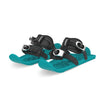

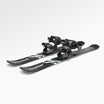



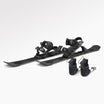






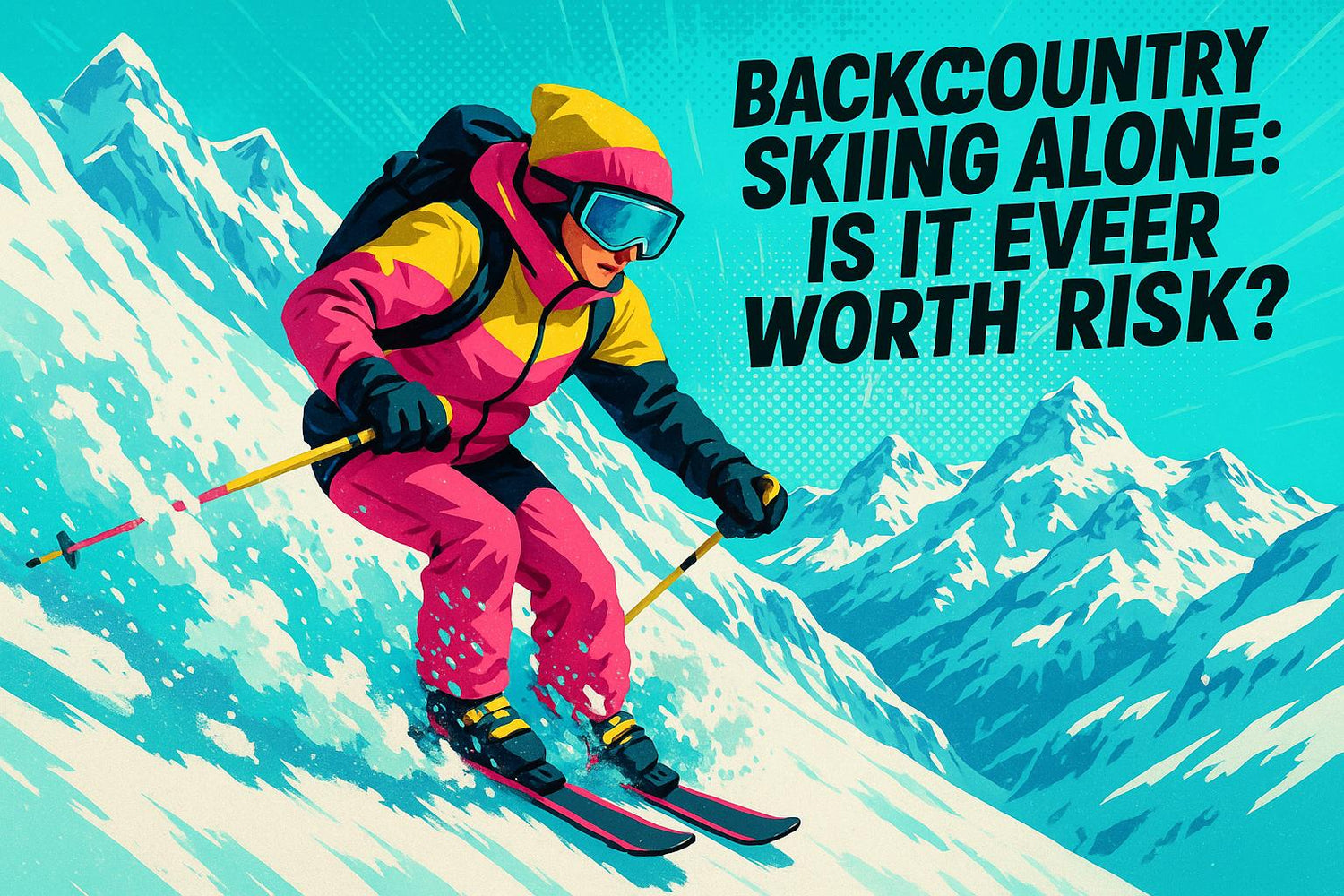
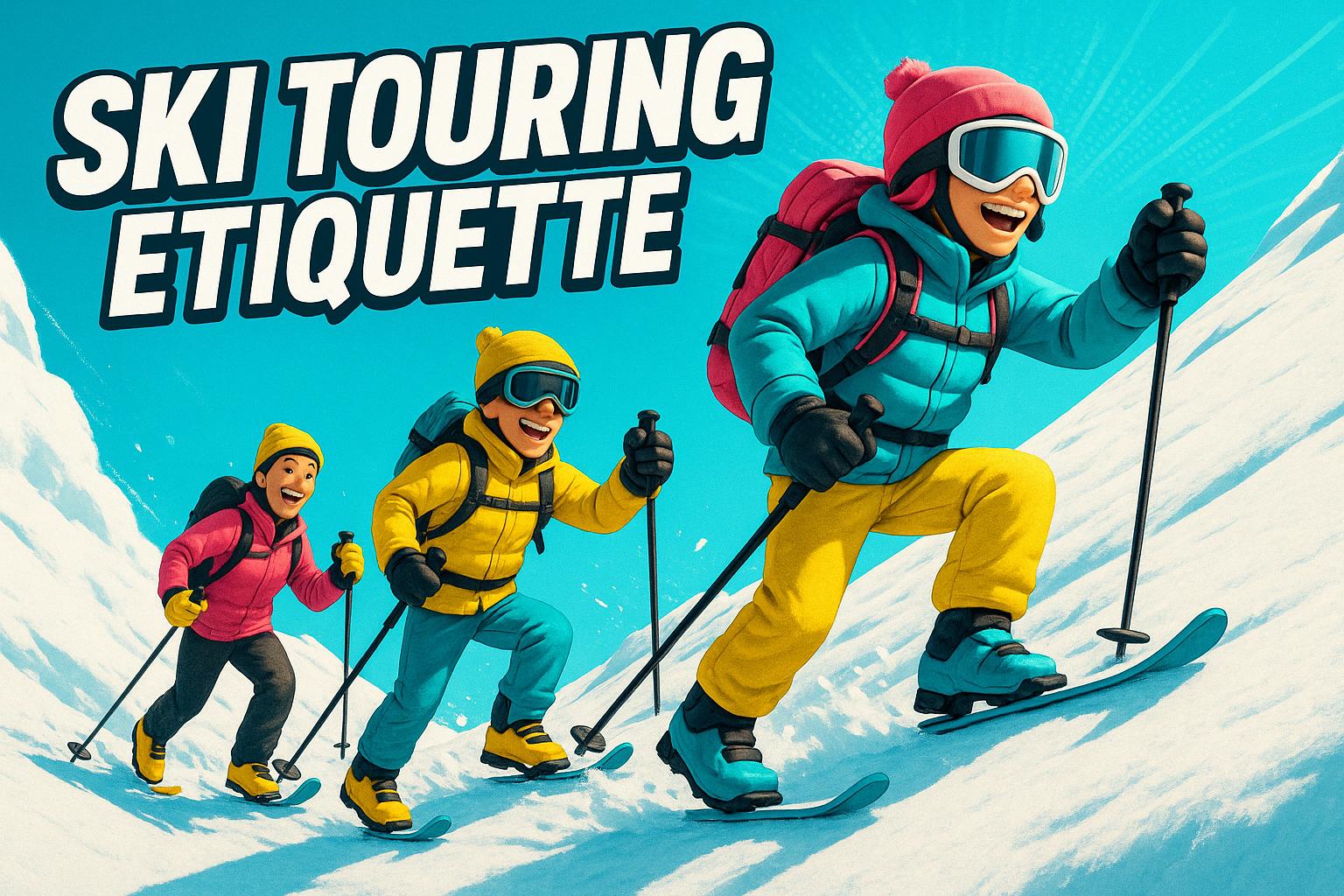
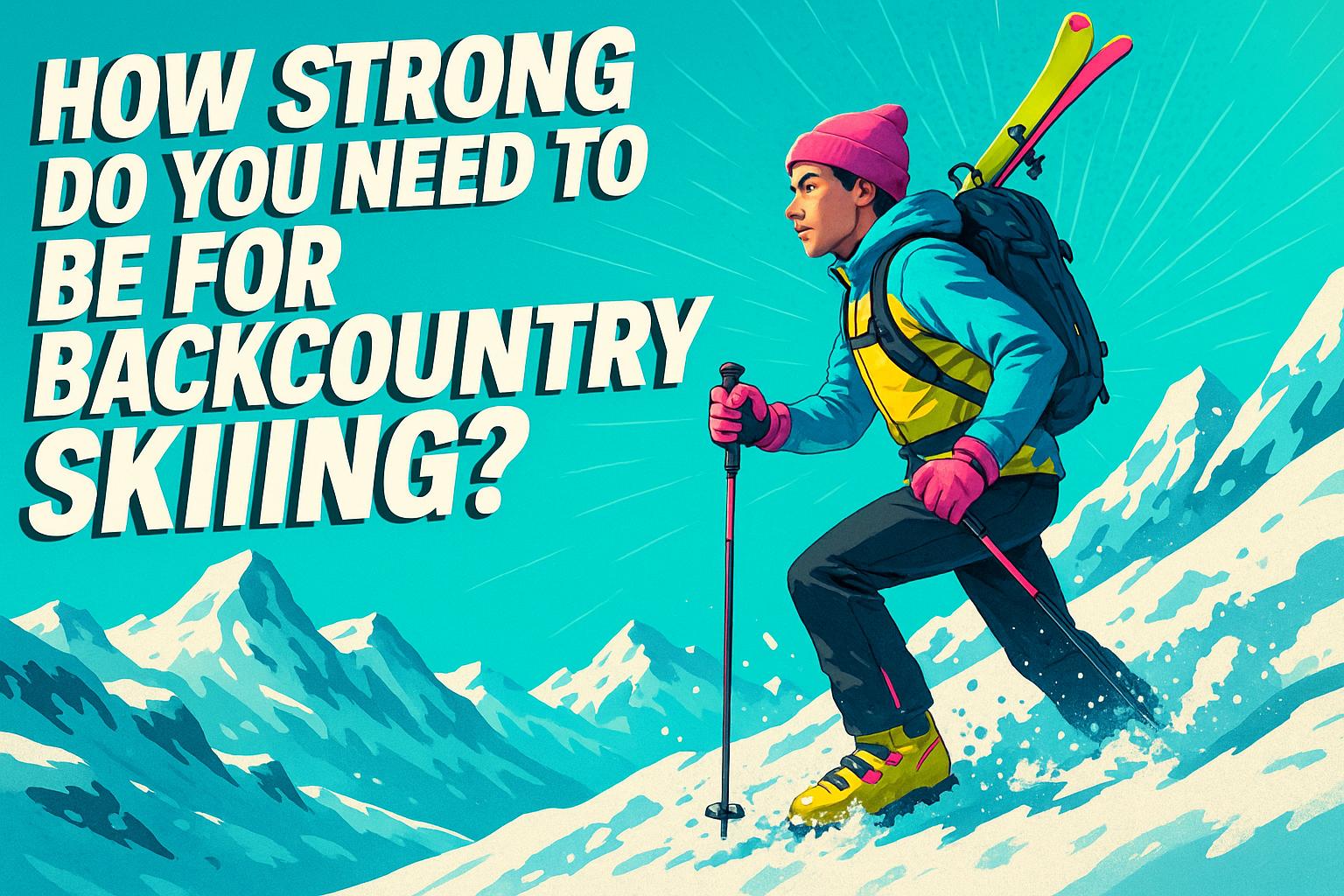

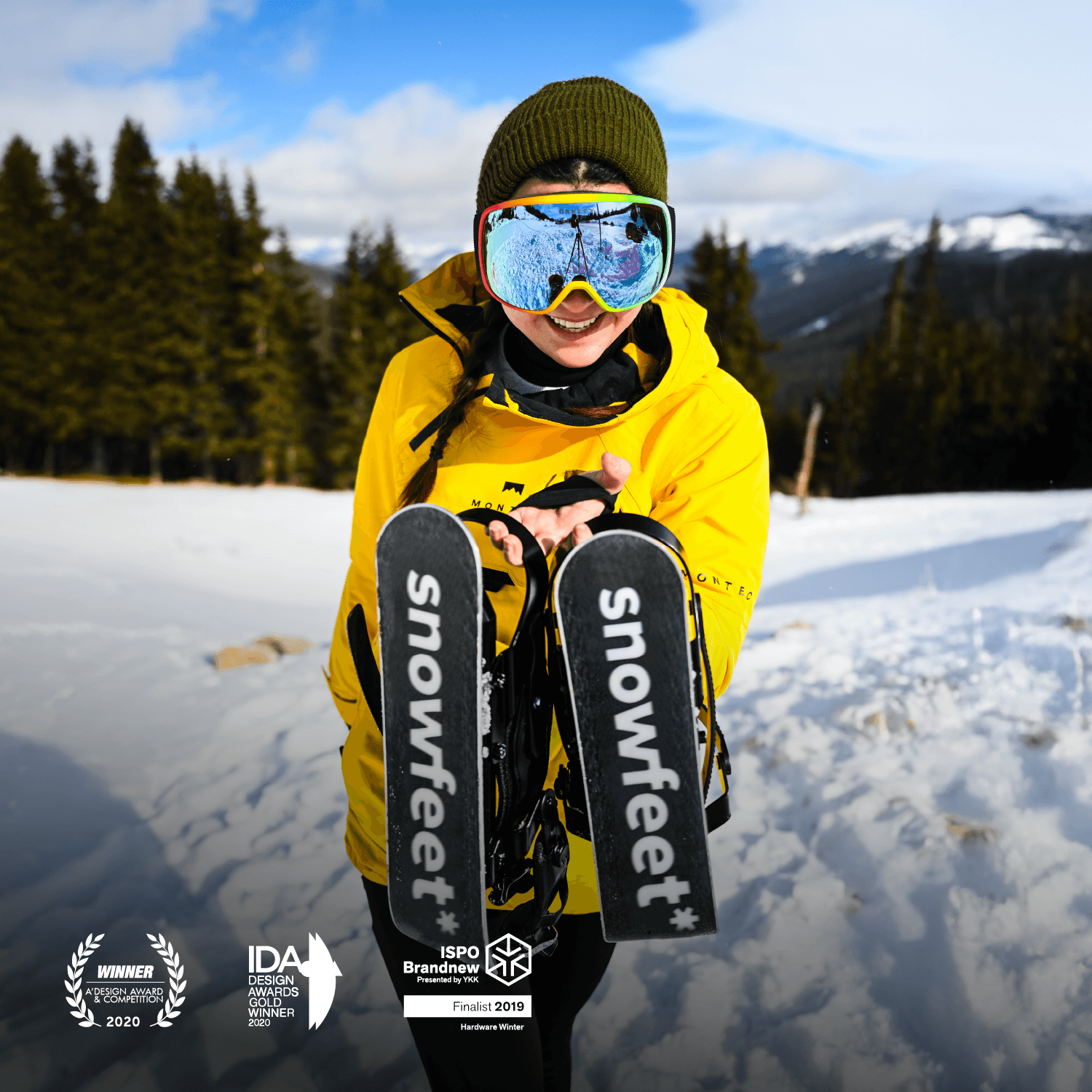

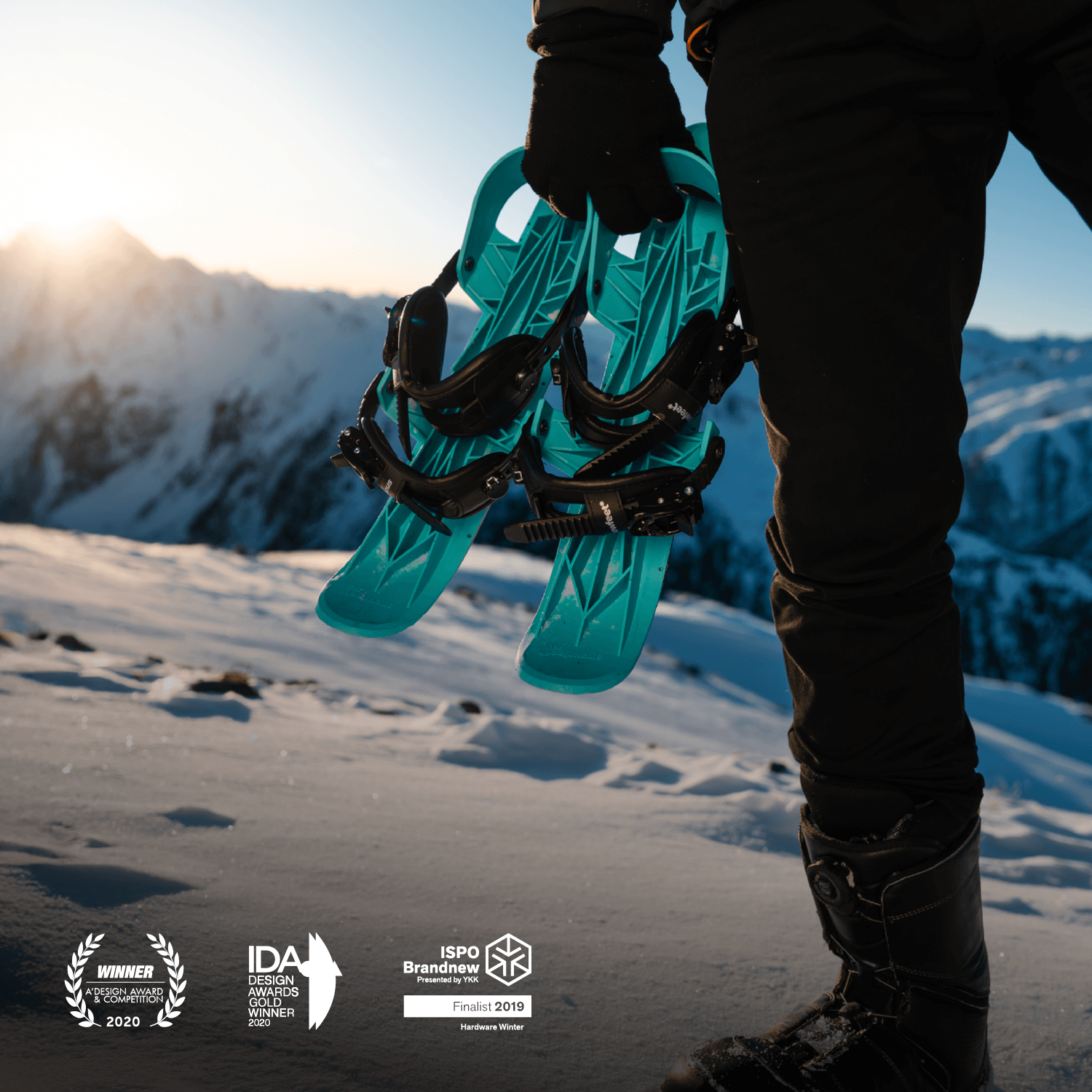
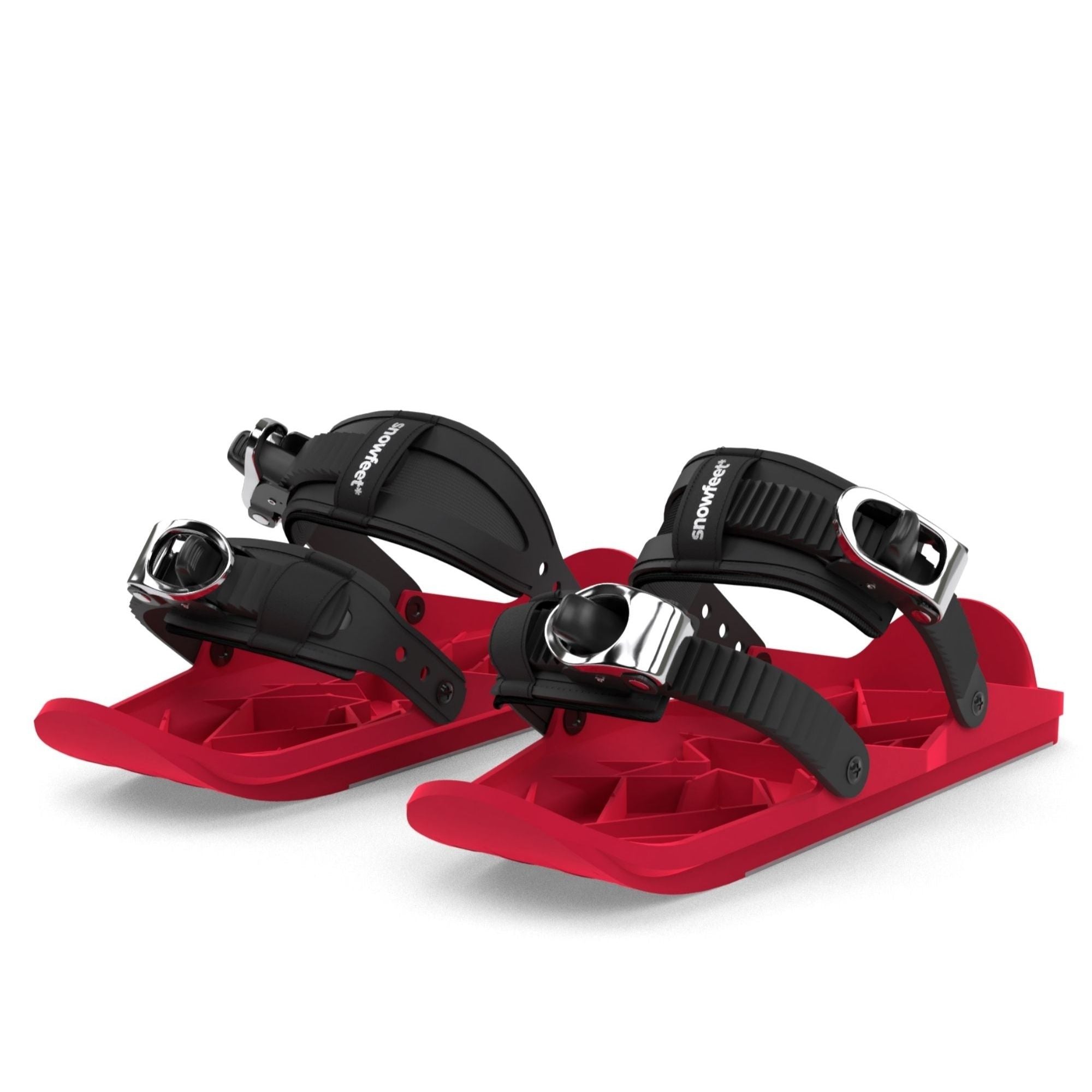



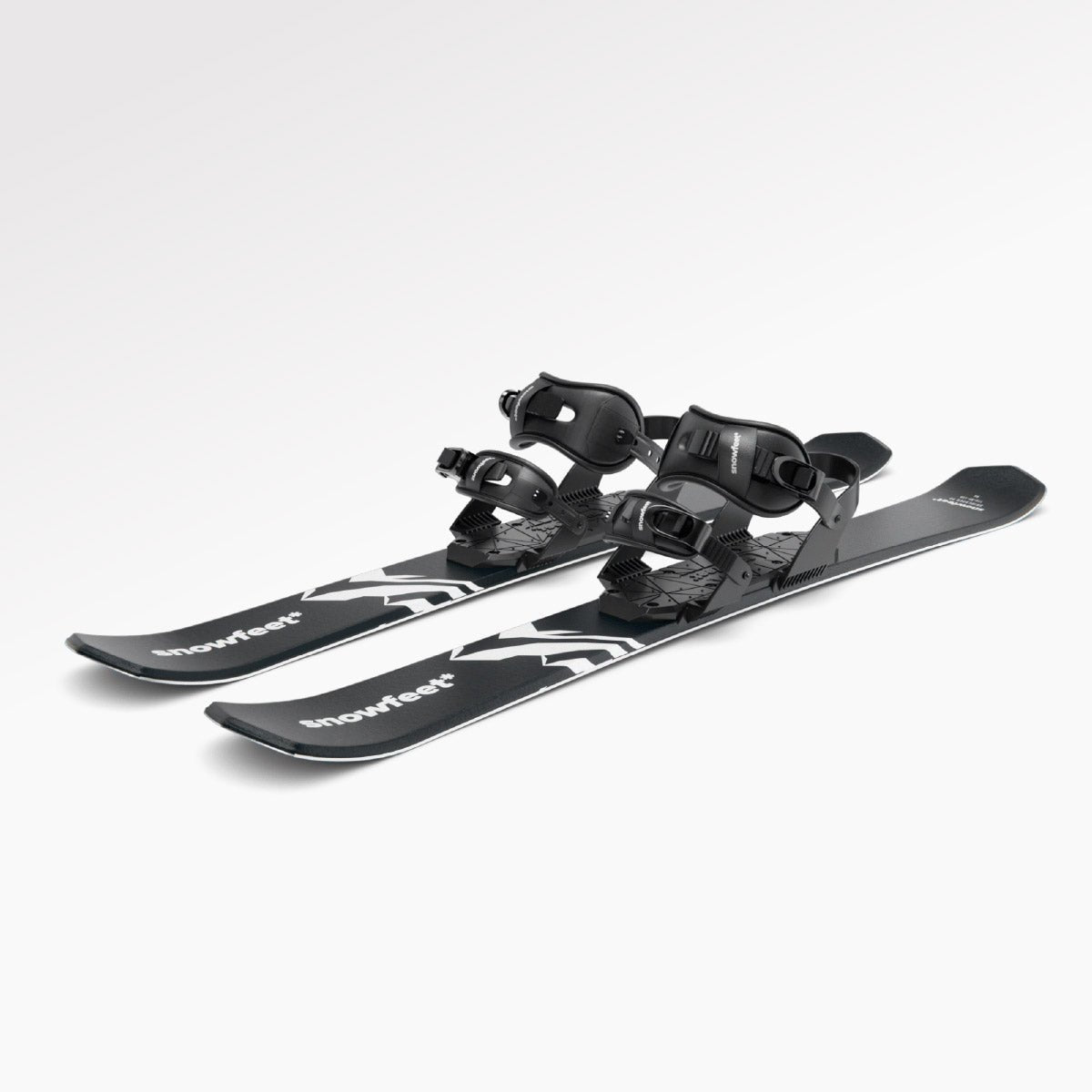
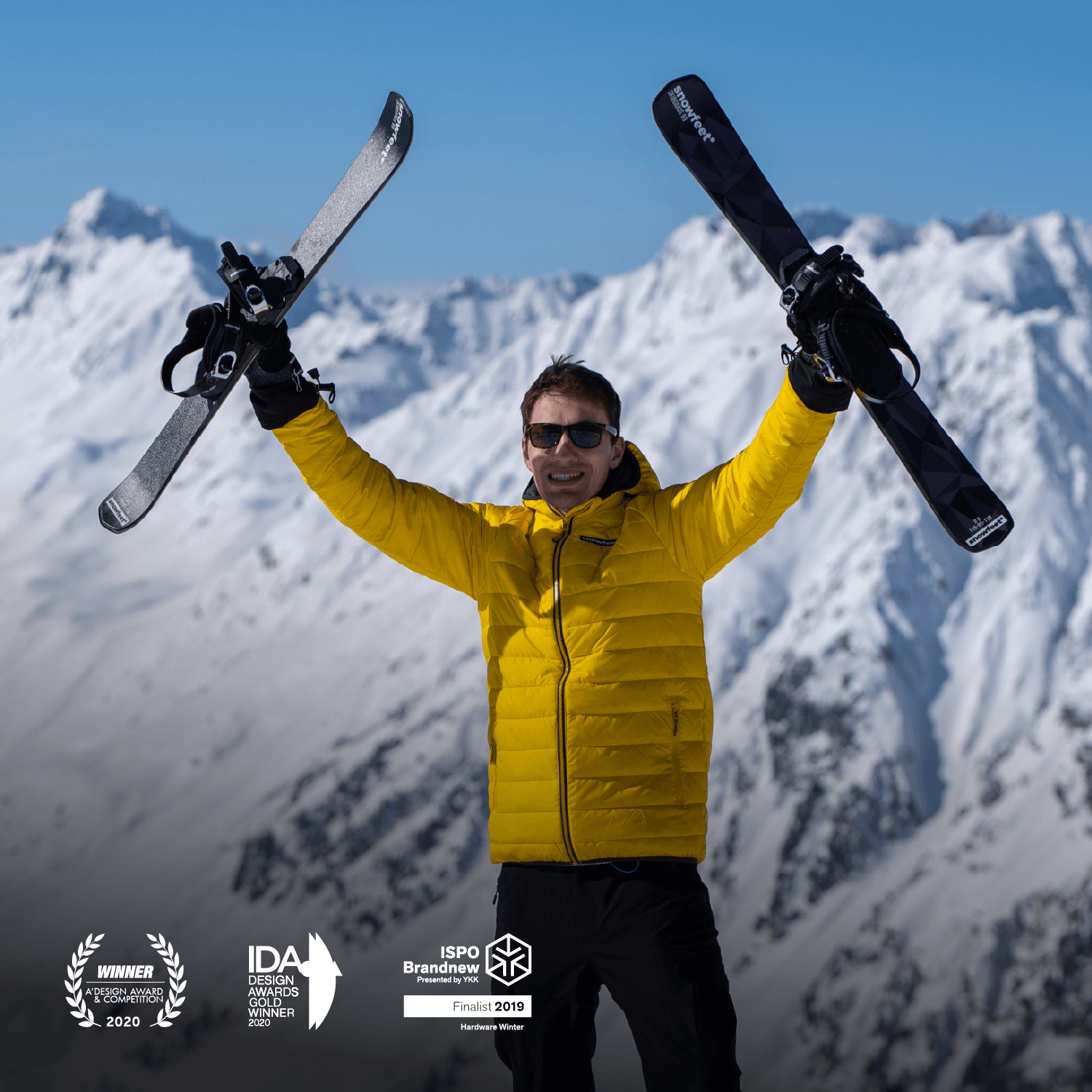
Lascia un commento
Questo sito è protetto da hCaptcha e applica le Norme sulla privacy e i Termini di servizio di hCaptcha.